News
View the latest inspiring and positive news and information about what's going on in the PM and IT world.

Date: 04/06/2020
Liza Andersson is a Project Manager Global Sales Operations at FLIR Systems Trading Belgium.
She is passionate about Agile, never gives up and can tackle any type of Project Management challenge.

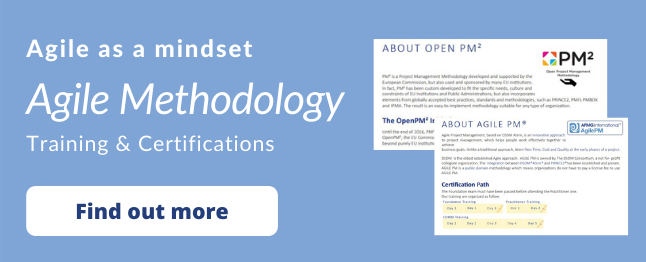
Read more
What's your current job title? What is it you actually do?
My current job title is Global Sales Operations Project Manager. I drive our global efficiency and standardization projects. I also oversee numerous local initiatives that are divided into two continents and five FLIR facilities.How did you arrive to follow a project management career?
I like to get things done. I don’t want to waste any time in the current when the future is where we want to go. I have strong execution skills, no patience and value teamwork as the only way to accomplish something. This is how I came to feel right at home in the project management role. I began my career with FLIR six years ago in the order processing department, where I valued supporting our customers and improving minor work procedures around me to ease my day. First, when we had a change in management in my local office I got the chance to start participating in projects. This gave me and other colleagues the opportunity to display other talents than only our daily skills. The new local management changed the view on how we work within my local office, promoting what you are good at and finding others that are good at the things where you lack skills. The combination became a very fertile ground for self-development leading to new job opportunities. For some of my colleagues, this led to new positions bordering Global Trade Compliance, some took the path of Business excellence and quality. But for me, this meant an introduction to project management. I always worked organized and in structures so for me to take this path was a natural step.FLIR considers itself an Agile organization, how does that mirror in your daily work?
Yes, we truly work Agile in the deeper sense of the word. FLIR doesn’t just say it works Agile, we really have it as our core principle of work methods. I notice our Agile way of work through our TFM (the FLIR method), lean project improvements and our IT Scrum Masters that run projects. The Scrum Masters focus on training business teams on how to work Agile and how to utilize it efficiently in Project Management. To us at FLIR iterations, sprints and small deployments of deliverables are part of our core as we say we want to “move at the speed of heat” as we are ready to take on change at any form. The world is not static and if you chose to deploy solutions at its end game you might have missed the need of the customer. Needs shift and change so fast today that the ability to move with it requires agile teams and solutions.You have an AgilePM Certificate, how did that help you reach your goals?
In 2018 I got promoted from being a customer support agent to a project coordinator role. By doing so the doors opened up to global initiatives and working with our colleagues around the globe both in Asia and in America. After a year in this role, I felt the need to start training. I couldn’t rely on my standard toolbox anymore so I took a course of Agile PM at QRP Belgium. When my local manager, who is extremely Agile and Lean Six Sigma oriented, got promoted to become our global management I became global as well. This made the need for a larger toolbox inevitable. I completed my Agile PM course, organised by QRP Belgium, in September 2019 and achieved my promotion to Project Manager thanks to this. Today I am looking at PMI courses to enhance my toolbox even further. I am also leaning towards Scrum Master certification to broaden my Agile toolbox even more.What type of Agile frameworks are you currently using and/or planning on using at FLIR?
We are currently using SCRUM, Lean and Agile PM. I am not planning to review any other at this time.What about Agile and remote work, how did FLIR handle the current situation in regards to COVID?
As mentioned above Agility is one of our core mindsets. It took us just four days to shift from office work to remote and this for our entire business (excluding production and service). By leveraging tools such as ADO, ZOOM, MS Teams and Skype we easily moved from face to face meetings into daily scrum sessions etc through MS teams and Zoom. Tools such as Mindmanager with joined editing efforts made it possible to brainstorming remotely and agree on areas of focus without the need of meeting in person.What is the biggest issue/change you see in your network at the moment regarding PM?
Currently, I am struggling with the ability to enable resources as not many of the team members work on projects full time. However, ADO seems to have solved this issue and this is something I am seeking more information regarding setting up a good process to tackle resource requests.What's your advice on how to solve/face the above-mentioned issue/change?
Stay connected to other Project Managers around the globe. If we can leverage each other’s experience we will build a better project organization within our own organization too.What are three things you’ve told yourself that you would like to learn in the near future to develop yourself as a professional?
Personally I have set three topics that I am going to tackle in 2020- Do a 360 feedback review to enhance my leadership skills
- Shift my focus from operational to transformational and framework (PMI)
- Improve my skills in the tool ADO and get a certification

Liza Andersson
Liza Andersson is a Project Manager Global Sales Operations at FLIR Systems Trading Belgium. She is passionate about Agile, never gives up and can tackle any type of Project Management challenge.

Date: 20/05/2020
The DevOps Fundamentals qualification is a professional qualification and strongly connected to the Agile methodology. This qualification provides you with an understanding of the DevOps Fundamentals.
There are no mandatory requirements for the DevOps Fundamentals certification process, however, work experience in IT is recommended.
Read more
Examination Target
- Management, operations, developers & QA and testing professionals.
- IT professionals working within, or about to enter, an Agile Service Design environment.
- Different IT professionals; IT development, IT operations or IT service management.
- Individuals that require an understanding of DevOps.
PeopleCert DevOps Fundamentals Exam Format
The PeopleCert DevOps Fundamentals exam look like this:- Language: English
- Duration: 60 minutes, 75 for non-native speakers
- Materials: none, this is a closed book exam
- Questions: 40
- Type of questions: multiple choice
- Provisional pass mark: 70% or higher (28 questions correct)
- Exam format: Online or on paper
- Certificate format: Online, paper upon request
PeopleCert DevOps Fundamentals Exam Questions examples
The PeopleCert DevOps Fundamentals exam questions are all multiple choice. The DevOps Fundamentals exam includes different multiple choice question type: list, missing word, negative and true/false. Example ‘standard’ OTQ: Which of the following statements BEST describes Knowledge according to the DIKW Model? A. Statement W B. Statement X C. Statement Y D. Statement Z Example ‘list’ OTQ: Consider the following statements: 1. Organizational structures encourage a silo mentality and discourage collaboration 2. Local optimization creates process and integration challenges 3. Simple processes result in waste 4. The reduction in the use of public cloud-based delivery options Which two of the above are examples of an IT value delivery problem that DevOps seeks to address? 1. 1 and 3 only 2. 2 and 4 only 3. 1 and 2 only 4. 3 and 4 NOTE: Two of the list items are correct. List style questions are never negative. Example ‘missing word’ OTQ Identify the missing word(s) in the following sentence: [?] are the three layers of the full stack of DevOps. a) a, b, c b) d, e, f c) g, h, i d) j, k, l Example ‘negative’ standard OTQ: Which of the following options describes or characterizes what DevOps is NOT? a) Option K b) Option L c) Option M d) Option N NOTE: Negative questions are only used, as an exception, where part of the learning outcome is to know that something is not done or should not occur.PeopleCert DevOps Fundamentals Objectives
The DevOps Fundamentals certificate is aimed at anyone who wishes to become an active member of a DevOps environment. It will provide its certification holders with a fundamental level of knowledge and will certify that they have a solid understanding of DevOps using a variety of tools. The learning objectives are:- History and need of DevOps
- Key concepts DevOps and their explanation
- The business value of DevOps
- DevOps culture, transformational leadership and DevOps structure and teaming
- 15 Essential DevOps practices
- Basis knowledge on Agile PM and Scrum methodology
- Key concepts of cloud technology and virtualization, automation for deployment pipeline and architecting for continuous delivery
PeopleCert DevOps Fundamentals Certificate
The validity of the DevOps Fundamentals certificate is lifelong; this certificate will never expire.
QRP International is a DevOps Accredited Training Organization (ATO) by PeopleCert on behalf of Axelos, is authorized to deliver DevOps Fundamentals courses and can prepare you for the examination leading to the DevOps Fundamentals certificate in Project Management.
Date: 27/05/2020
User stories are part of an agile approach that helps shift the focus from writing about requirements to talking about them. All agile user stories include a written sentence or two and, more importantly, a series of conversations about the desired functionality.
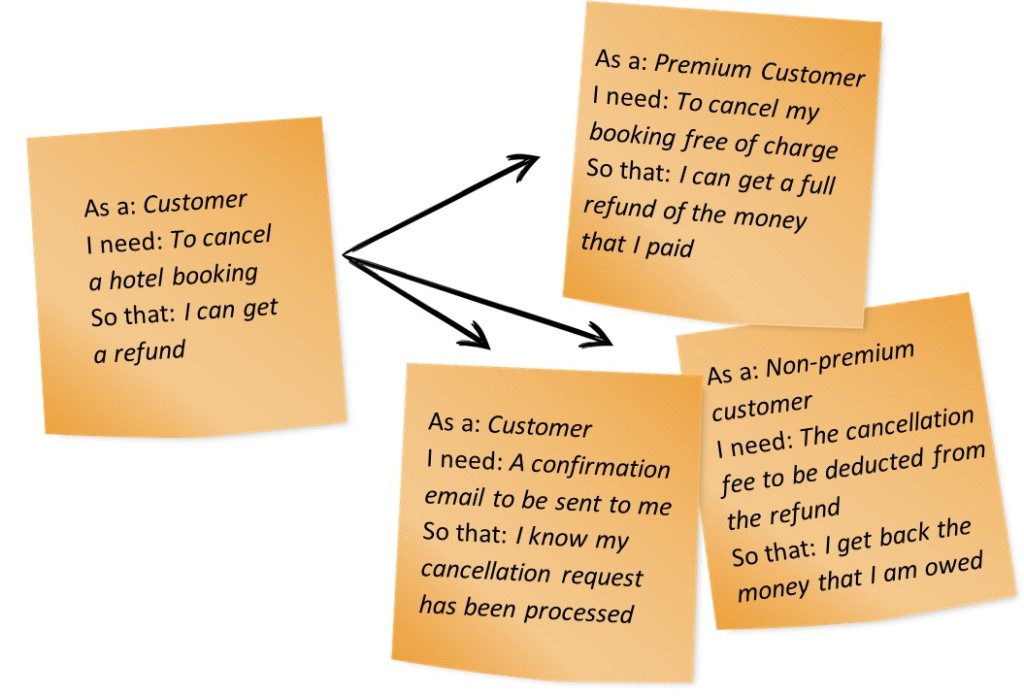 Who writes the user story?
User stories can be written by anyone with the skills necessary to write them. Most often they are written by the Product Owner (link to the future post). But they can also be written in collaboration with the entire team.
Acceptance criteria
Together with user stories, it is important to develop acceptance criteria, that is, criteria that must be used to evaluate whether a story has been correctly and fully implemented. These criteria are the conditions that the software product must comply with in order to be accepted by the user and / or customer.
Acceptance criteria are essential to understand when the goal of the user story is achieved.
Format
The user story is often written on an A6 paper. The small format obliges you not to use too much information.
The card is useful because it is easy to use and makes it possible to group the cards on the wall or on the table. Grouping them makes it easier to evaluate the consistency, completeness and connections between different stories. Even if you have electronic stories, it can be helpful to use cardstock.
Another important factor is visibility: the stories must be visible to the whole team.
Basically they represent the unit of work that the team is committed to achieving in a sprint.
What are the key features of an agile sprint? Read the blog post the 5 characteristics of a successful agile sprint!
*INVEST in Good Stories, and SMART Tasks
Copyright © 2019 Agile Business Consortium all rights reserved
Who writes the user story?
User stories can be written by anyone with the skills necessary to write them. Most often they are written by the Product Owner (link to the future post). But they can also be written in collaboration with the entire team.
Acceptance criteria
Together with user stories, it is important to develop acceptance criteria, that is, criteria that must be used to evaluate whether a story has been correctly and fully implemented. These criteria are the conditions that the software product must comply with in order to be accepted by the user and / or customer.
Acceptance criteria are essential to understand when the goal of the user story is achieved.
Format
The user story is often written on an A6 paper. The small format obliges you not to use too much information.
The card is useful because it is easy to use and makes it possible to group the cards on the wall or on the table. Grouping them makes it easier to evaluate the consistency, completeness and connections between different stories. Even if you have electronic stories, it can be helpful to use cardstock.
Another important factor is visibility: the stories must be visible to the whole team.
Basically they represent the unit of work that the team is committed to achieving in a sprint.
What are the key features of an agile sprint? Read the blog post the 5 characteristics of a successful agile sprint!
*INVEST in Good Stories, and SMART Tasks
Copyright © 2019 Agile Business Consortium all rights reserved
Read more
What is a User Story? The definition
The User Story represents an Agile practice, especially used in Scrum, that "captures" the needs of users. It does this by expressing characteristics, functions and requirements for the product to be made in a general and non-detailed way. The User Story is part of the Product Backlog. In Scrum, the Product Backlog includes a "list" of all the things that need to be integrated into the project. The User Story looks simple but is truly effective. It requires to focus on the needs and needs of the user (and/or customer) and on the value to be achieved. The user's history is often written on cardboard or post-it and is attached to the wall or on tables in order to facilitate planning and discussion. In this way, the User Story manages to control the attention from the writing of the functionalities to the comparison regarding the functionalities. The User Story demonstrates the importance of the affirmation of the Agile Manifesto "the software working rather than the exhaustive documentation".What is a User Story used for?
User Stories are a great way to clearly define what a user wants from a product/service. A set of well written and prioritized user stories can certainly help the team to express and share the product features without going into technical details. A user story allows you to understand the importance and impact of a feature on the business. It also helps to make the customer understand the usefulness of the feature and its priority. If well written, a user story provides a solid basis for communication and collaboration, bringing the user to the centre of attention. The Use of User Stories facilitates discussions on the product, both within the development team and with external stakeholders.What is the User Story made of?
Each User Story describes why & what to do in a simple, understandable way for the customer and developers. The point of view is that of the user, who requires the new functionality. The amount of information is that which is essential to allow the development team to make a rough estimate of the work required for the realization. There are several ways of writing a user story. Usually, the User Story contains a name, a brief description and the specific acceptance criteria and conditions for which the story can be considered complete. A model can be: As a <type of user>, I want <some goal> so that <some reason>. Here are two examples:- As a customer, I want to cancel my hotel reservation in order to get a refund
- As an online customer, I want to be able to log in to access my account securely.
Fundamental characteristics of the User Story
User stories should always contain 6 characteristics, represented by the acronym INVEST, created by Bill Wake *: Independent: they must be independent of each other. Negotiable: they must be "negotiable" and open to everyone's contributions. Valuable: they must bring added value to the customer. Estimable: they must be estimable, not exactly, but enough to allow rough planning for implementation. Small: they must be small, in order to be able to realize the functionality in a couple of weeks of work. They must be small because in this way the estimates are more precise. If the story is too complex, I break it down into multiple stories. Testable: they must be able to be tested and must-have information on how to carry out the tests. See here an example of how to break down a user story into simpler user stories. Who writes the user story?
User stories can be written by anyone with the skills necessary to write them. Most often they are written by the Product Owner (link to the future post). But they can also be written in collaboration with the entire team.
Acceptance criteria
Together with user stories, it is important to develop acceptance criteria, that is, criteria that must be used to evaluate whether a story has been correctly and fully implemented. These criteria are the conditions that the software product must comply with in order to be accepted by the user and / or customer.
Acceptance criteria are essential to understand when the goal of the user story is achieved.
Format
The user story is often written on an A6 paper. The small format obliges you not to use too much information.
The card is useful because it is easy to use and makes it possible to group the cards on the wall or on the table. Grouping them makes it easier to evaluate the consistency, completeness and connections between different stories. Even if you have electronic stories, it can be helpful to use cardstock.
Another important factor is visibility: the stories must be visible to the whole team.
Basically they represent the unit of work that the team is committed to achieving in a sprint.
What are the key features of an agile sprint? Read the blog post the 5 characteristics of a successful agile sprint!
*INVEST in Good Stories, and SMART Tasks
Copyright © 2019 Agile Business Consortium all rights reserved
Who writes the user story?
User stories can be written by anyone with the skills necessary to write them. Most often they are written by the Product Owner (link to the future post). But they can also be written in collaboration with the entire team.
Acceptance criteria
Together with user stories, it is important to develop acceptance criteria, that is, criteria that must be used to evaluate whether a story has been correctly and fully implemented. These criteria are the conditions that the software product must comply with in order to be accepted by the user and / or customer.
Acceptance criteria are essential to understand when the goal of the user story is achieved.
Format
The user story is often written on an A6 paper. The small format obliges you not to use too much information.
The card is useful because it is easy to use and makes it possible to group the cards on the wall or on the table. Grouping them makes it easier to evaluate the consistency, completeness and connections between different stories. Even if you have electronic stories, it can be helpful to use cardstock.
Another important factor is visibility: the stories must be visible to the whole team.
Basically they represent the unit of work that the team is committed to achieving in a sprint.
What are the key features of an agile sprint? Read the blog post the 5 characteristics of a successful agile sprint!
*INVEST in Good Stories, and SMART Tasks
Copyright © 2019 Agile Business Consortium all rights reserved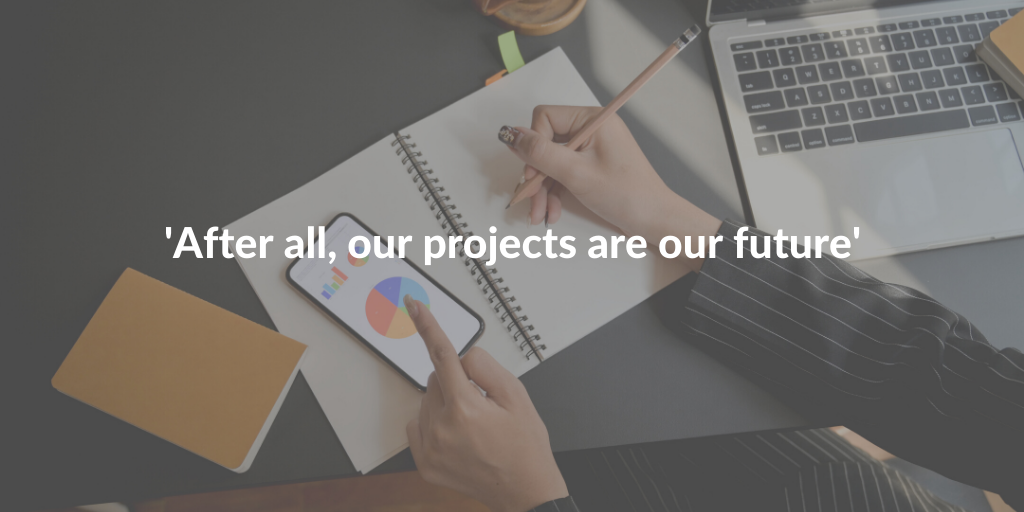
Date: 15/05/2020
Marisa Silva is a passionate advocate of the value of PMOs as business partners and enabling strategic change delivery. She is is an experienced PMO and PPM adviser, educator, author, and international speaker.
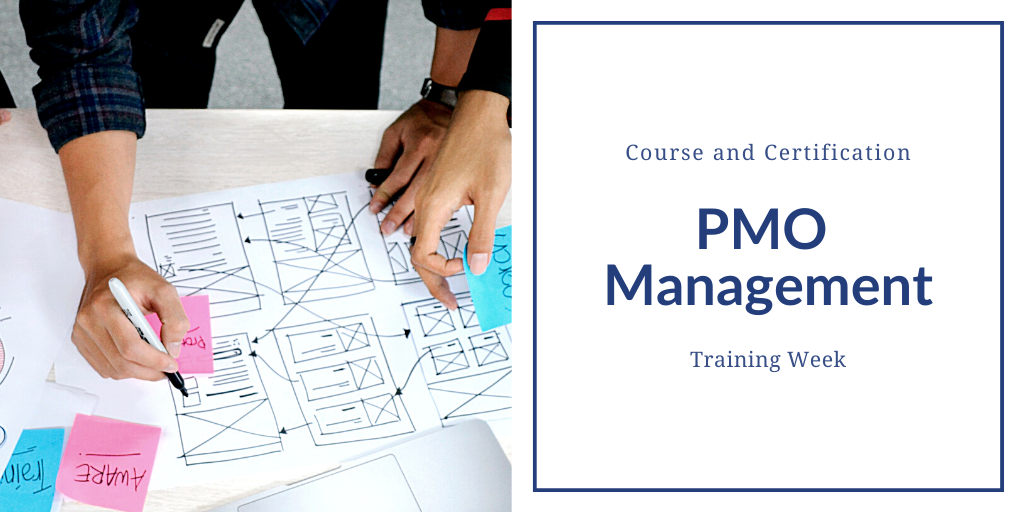

Read more
I read in your headline on LinkedIn: Making PMOs critical to the business. How do you do it?
PMOs are an interesting species in the Project Management universe because they face an underlying paradox in their 'raison d’ être': while they exist to meet the needs of the business, if all projects were successful, in principle, then you would assume that there would be no need for PMOs. So, asking how to make PMOs critical to business is indeed a key question that should be ever-present in the mind of PMO professionals. My view is that PMOs can become critical if they adopt three key imperatives. . First, the Imperative of the Business. PMOs which are critical in the organization are business-centric, a trusted partner which enables project delivery, that is, all their functions are designed to serve the business. PMOs need to start thinking of themselves as a service. Their service catalog can then cover a variety of activities, from ensuring that projects are delivered in the right way (project management) but also that the right projects are carried out (portfolio management) and with the appropriate level of competency. . Second, the Imperative of Agility. While different methodologies and approaches have been developed for projects and project teams to embrace agility, not much is being said about PMOs. However, PMOs are probably the organizational entities that need them the most; not only do they inform and centralize project management practices, but they also have a bad reputation as bureaucratic, slow supportive bodies. PMOs need to embrace Agile too! They need to change their role from a top-down, command and control function, to one of a PMO on the sidelines, providing support and focusing on capability rather than control, and empowering teams to define and to work with the joy of minimum viable bureaucracy. . Finally, the Imperative of Value, the cornerstone of PMOs. You will certainly find this buzzword in the PMO mandate, in the PMO roadmap, or any presentation about the purpose of the PMO. PMOs are created to enable the creation of value, helping the business to maximize its bang for the buck. At their core, PMOs are all about value. However, value is a subjective concept and what is valuable to me might not have any value to you. The value lies in the eyes of the beholder. Thus, it is fundamental that PMOs start to look at their stakeholders as customers instead and that they ask what these customers want if they are to deliver to their value expectations. Also, we need to start measuring our own delivery of value – we demand it from project teams, so why not be transparent about our performance ourselves? – and communicating more. I know plenty of PMOs who are fantastic in what they do, yet few know where they sit in the office or who they are! In a nutshell, critical-to-business PMOs are servant leaders, passionate about what they do, and able to adapt to the needs of the business with agility.How did your passion for projects start? What's the thing you love the most about your job?
My career was born in a project management consulting company; thus I was, in a way, infected by the energy and passion for projects of my colleagues and mentors. I was lucky enough to learn from individuals who are very experienced and knowledgeable and invested in my professional and personal development. If there is advice I can give to anyone starting in the project management world: get a mentor. It is an enriching life experience. Working as a project lead, consultant, and trainer in project management, what I love the most is the diversity of industries, project types, and dimensions I get to work with. I am always learning something new every day, and I love it. One day I’m doing a PMO maturity assessment to a company dealing with nuclear waste in the North of England, the next day I’m delivering a workshop to a Council in a remote location, and next flying to Germany to train a company on using a PPM tool. Yes, it can be tiring, but I would be lying if I said I didn’t like this busyness. I’m very lucky to be able to work in an industry I love, and to have learned and worked with so many amazing companies and people to date. It’s no coincidence that I call myself The Lucky PM!What's the biggest issue you see in the PM community at the moment?
There are many aspects that are worth mentioning but I’d like to stress three of them which are not exclusive to the PM community but are still very visible amongst us. One is our resistance to think beyond the status quo, the norm. We need to start thinking more critically in project management, challenge more, question more. In a time where there are information overload and a growing body of knowledge, we shouldn’t just accept solutions “prêt-a-porter”, fast-thinking and oversimplifying the reality but instead, explore different perspectives and not rush into solution-mode when, sometimes, not even the problem is clear or when there is no simple solution. The second one has to do with a view of project management as a “just-do-it” discipline and project practitioners as doers. I think there is much to lose for the profession if we remove our responsibility from the front-end and legacy of our projects. Projects change the world, literally, and as the saying goes “with great power comes great responsibility”. Unfortunately, I often see the power but not always the responsibility. To this end, my third rant of the day relates to the missed opportunity for more projects for humanity with a global impact. With our competencies, we are in a privileged position to make a difference and to start driving a consciousness for project management. With the recent pandemic, some good examples start to show but we still need more sustainable, responsible project management. After all, our projects are our future. We should ensure that we are making it a good one.
What's in your opinion the impact of the COVID 19 pandemic on projects? How is this situation changing the community?
There is no question that COVID 19 changed the world as we knew it to the point that we can talk of a BC (before COVID) and AC (after COVID) time. Projects were no exception. Some were canceled, postponed, portfolios of work and budgets had to quickly be reviewed. This is not entirely a bad thing though. For a long, we have heard about the necessary revolution in working practices, with digital nomads, self-learning solutions, flexible working, remote teams, etc. Whether organizations like it or not and were prepared or not, the time has come for us to trial the concept. And surprise: for many organizations, it’s working! We didn’t need all those meetings, all that office space, all the structure after all. Work still gets done if done from home. The same happened with digital transformation. After years of preaching about it, companies were “forced” to finally do something about it. And projects for humanity are being born out of crisis too, such as Tech4COVID19 or PMOsHackingCovid, which makes me proud of working in project management, with people at heart, as it should be. I think that, as a community, we will become more flexible, aware, antifragile, and, above all, more human and conscious of one another from COVID 19.What's your advice on how to solve/face this situation?
I don’t want to romanticize the problem and I’m not even sure if there is a solution. For the time being, I think COVID will remain a situation to cope with rather than to solve, at least until a vaccine is available. But I also believe that we are not defined by the challenges we might face but by how we respond to them. Therefore, I think this crisis gives us a chance to decide to look at its positive impact. The crisis can unite people. Over the past weeks, particularly in the countries more impacted by the virus, we have seen a multitude of gestures of kindness, collaboration, and solidarity (such as to thank the tireless work of healthcare professionals), that remind us that we are just one big family. We share the same concerns, the same anxiety, the same dreams, and fears. We learn, suffer, and are inspired by each other, no matter where in the world. We are more resilient than we think. We are all in this together. The fact is that COVID 19 is still out there so we might as well do something of value with it, even if it is just about providing encouragement, assurance, and support to others. Let us use this opportunity to reflect and review our priorities, including in our PMOs! To acknowledge our fragility and to value what matters most. To say “thank you”, “I’ve got your back”, and “great job!” more often. To use our time more wisely and to re-invent ourselves. Together. Let’s not ask what would happen if the world ended with this crisis but what can we do differently in our projects and lives if the world re-started. This is our wake-up call. An opportunity not to be wasted.
Marisa Silva
Marisa Silva, also known as 'The Lucky PM', is an experienced PMO and PPM adviser, educator, author, and international speaker. She is a passionate advocate of the value of PMOs as business partners and enabling strategic change delivery!
Date: 13/05/2020
We now know that innovation is the key: innovation in products, services, in the way of working; we no longer accept phrases like "we do as we always have" and "Agile" seems the magic word that can help us. Especially in the world we live in today, with a ongoing global pandemic, we are living in a fast-changing business world.
Traditional approaches do not improve flexibility and are limited in offering help to current uncertainties.
Is Agile the answer?

Read more
What is Agile?
As the volatility of our business environment increases, organizations seek to respond to these changes effectively. One of the answers is the introduction of Agile methods. This approach is considered more suitable for uncertainty and change than traditional approaches.
Agile is not a ‘one size fits all’ and offers you different frameworks to apply to different situations.
Agile has its roots in the world of software but has now developed far beyond, involving the world of project and service management. Agile is more than a set of methods, practices and behaviors. Agile is transforming the world of project management and is radically changing the way in which business and IT work together to successfully face change. It is increasingly accepted that businesses need to be Agile to succeed, and that Agile approaches are best suited to today’s fast-changing world. Innovation requires a change in culture for many organisations as embracing new ways introduces high risk, including the risk of failure. Agile is about delivering value for an organisation, however that value might be defined.Agile project management
Agile project management provides that projects can be managed and implemented in small work packages. Agile projects bring value to the business through frequent product deliveries called ‘features’. In a traditional waterfall methodology the requirements for the project should be documented in advance. Only later (the design) is the design of the entire solution completed, followed by product development, testing and finally implementation. If this whole process takes a year to complete, the business sees no tangible value until the end of the project. Within an Agile project, however, the items are created in small work packages called sprints. Agile is an excellent method to use when the business needs frequent changes or wants to receive the benefits of the product (s) first. With Agile you can focus on the needs of the business at the present moment and, if the requests change, they can be easily inserted in the next sprint. Any project can use Agile if deliverables can be produced and implemented in a short period of time. Do Agile projects create build capabilities? One-piece or a few pieces at a time.
5 features of a successful Agile project
- Sprints (or iterations) last from 4 to 12 weeks
- Direct communication has greater weight than documentation - you want to produce a product, not the product documentation
- Team members work in the same environment or use virtual tools to be together
- A sponsor 100% dedicated to the Agile process is necessary
- The changes to the requirements are expected and accepted
- Have a vision for the end game
- Follow a universally accepted project life cycle
- Requirements must be understood
- Use a shared and managed program
- A dedicated team
- Communication with stakeholders is essential
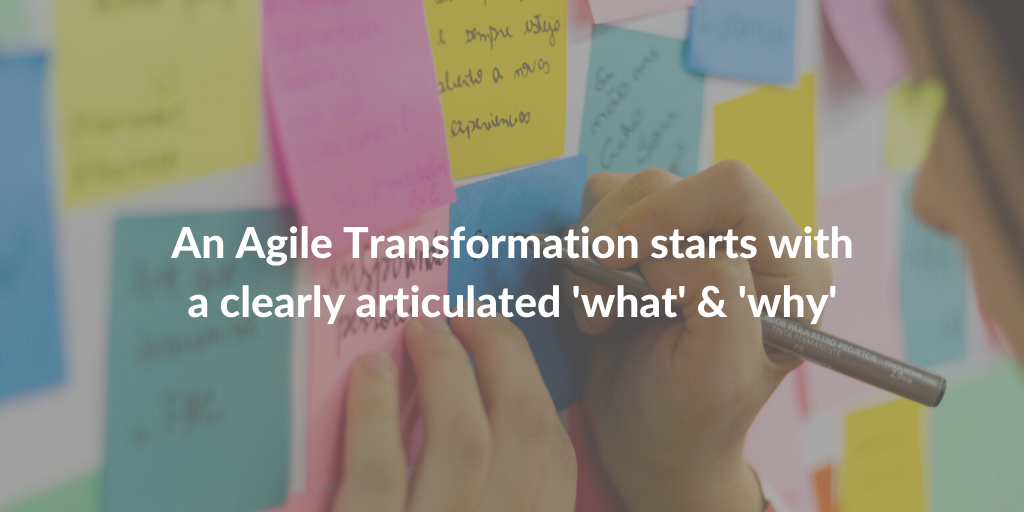
Date: 06/05/2020
Agile has become mainstream on a global level and across all industries.
Although it started in IT development, Agile is now being used far outside the initial scope.
Today we can talk about Agile companies, as the Agile mindset has entered all enterprise layers.
Some companies are leading the way for many years now but even more, are currently going through or embarking on the Agile transformation. As these Agile transformations also mean massive investment, it is good to understand why organizations decide to invest.
And next to ‘why’, the first fundamental question is: what is Agile?
Agile has many meanings, and if you would ask ten professionals, you would probably get ten different answers.
On top of that, there is the Agile lingo and a myriad of Agile frameworks out there, which is only adding to the confusion that some people and companies experience.

Read more
Agile definitions
Agile is a broad concept, which can make it challenging to identify and understand the real meaning of Agile. Agile is best described by a number of definitions. The different definitions show different perspectives on what Agile is, and each of them answers the question partially. A lookup in the dictionary will give you: “the ability to move quickly and easily”. On an enterprise level, this is reflected by being able to change direction if the set destination suddenly changes. The level of agility is currently being tested by a terrible global virus attack. It is forcing organizations to change and adapt quickly. We see that Agile companies are clearly taking a head position.The Agile Manifesto
The Agile Manifesto, published in 2001, the kickstart (or acceleration) for a number of Agile frameworks to evolve and become more popular. The Agile Manifesto contains 4 values and 12 principles. The values are key and are defined as follows:- Individuals and interactions over processes and tools
- Working solutions over comprehensive documentation
- Customer collaboration over contract negotiation
- Responding to change over following a plan
Agile mindset
A mindset based on the Agile Manifesto, not well known but very essential. This mindset enables faster and better decision making. Speed on the decision side means a better flow of activities, which means faster delivery of business value. Ultimately that is what agile is all about. In business, you need to make decisions based on incomplete information. Waiting until we have 90% of the info probably means waiting too long. Being able to decide with for instance 70% of the info, will improve cycle times of operations and projects. And even if this might increase the number of errors, the Agile mindset will enable smoother corrections in case of wrong decisions.Agile as an umbrella term
Agile is NOT a framework or methodology but instead an umbrella for a wide range of frameworks. All of these frameworks have their origin and scope and are based on the same values and principles. The frameworks are all different. Organizations can adopt a framework based on their unique context and needs. One of the key questions to be answered in an early phase is: what framework or combination of frameworks is best suited for our company? Curious to know more about this? We zoom in into this question in our webinar: The Agile Transformation. How to start?Why Agile?
Once we have a better idea of what Agile is about, we can ask ourselves why companies embark massively on the Agile transformation. Agile is everywhere and is difficult to find an executive that does not claim his/her organization should become more Agile. However what this exactly means, is not always crystal clear. At the same time, when asking employees why the company wants to become (more) agile, the answer sometimes indicates there is no real strategy behind the Agile transformation, or at least not fully communicated. The ‘why’ should, in my opinion, always be linked to increased business value. More business value can mean many things and is often related to one or a combination of the following items:- Higher customer or employee satisfaction
- Revenue growth or cost reduction
- Quality and efficiency improvement or risk reduction
- Specific business problem solving or a contribution to a strategic objective of any kind
When does Agile work?
- Once you start your Agile transformation, how do you prove it is contributing to for instance higher customer satisfaction and revenue as other factors will also influence these?
- And how do you ensure your Agile transformation benefits outweigh the cost without going too fast or too slow?








